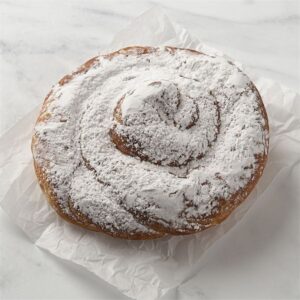I am not the first, nor will I be the last who has chosen this city to live in. By chance, my destiny ended up on this marvellous island. Whose capital grows every day, in a search for virtue based on miscegenation.
Diversity always adds up. Respect what there is, but don’t give up who you are. Humans still have freedom of movement depending on where they were born. If you are lucky enough to have been born in the developed world, you can move, but if your destination was Gambia, India or a pitiful list of undeveloped countries, you will eat shit. But there is also a way out.
The strategic position in the Mediterranean, being only two hours away from many European capitals has given it a worldwide projection, where nationalities from all over the world coexist on this island.
Palma has two very clearly differentiated parts. From the “walls” inwards and from the “walls” outwards. As you know, only a small part of them remains, next to the Cathedral. In 1902 work began on the demolition of such emblematic places as the Porta de Jesús, the Porta de Sant Antoni, the Baluarte Zanoguera, Porta de Santa Catalina and Porta de Santa Margalida.
All the charm clearly resides in the “walls” on the inside, which would now be called “the avenues”. The historic centre preserves a marked medieval layout, and the best way to explore it is starting from the imposing Cathedral or Seu de Mallorca, the best viewpoint over the bay of Palma.
Under the old city walls is Ses Voltes, a military enclosure transformed into a scenic and exhibition space, and the Parc de la Mar, the urban lung of the city. Next to the temple is the Almudaina Palace, an old Arab palace, later Christianised and reformed, delimited on the maritime side by the wall that protected the city.
At its feet are the Hort del Rei gardens, with water features, benches to enjoy the atmosphere, sculptures by artists such as Subirachs and Joan Miró. These gardens connect with the central Paseo del Borne, a boulevard headed by two stone sphinxes and flanked by trees, a lively shopping area that leads to Jaime III street, where you will find top brand shops and a department store.
In the nearby Plaza Weyler stands the Gran Hotel, one of the most important examples of Modernism, converted into an exhibition space. Next to the Teatro Principal – with a great cultural programme all year round – some stairs lead to the Plaza Mayor, a large fortified square where the shopping streets of San Miguel, Vía Sindicato and Colón converge. The latter connects with the Plaza de Cort, the administrative heart of the city, presided over by the Town Hall and the headquarters of the Consell de Mallorca, a great example of Mallorcan neo-Gothic architecture.
In the surrounding area is the Church of San Francisco – a Gothic church with a cloister where the remains of the Mallorcan scholar Ramón Llull rest.
Also in this area are the Arab baths, the Museum of Mallorca, the Parliament of the Balearic Islands and the March Palace.
You should stroll around the area, enjoy its small streets and imposing courtyards with Gothic staircases. There are many palaces that the Mallorcan nobility and bourgeoisie built in this spectacular neighbourhood.
The seafront promenade faces the Mediterranean, either on foot or by bicycle, you can reach the neighbourhoods of Portixol and Molinar on one side and the beach of Cala Major on the other.
This crossroads that is Mallorca, whose capital Palma de Mallorca emphasises its capital and its belonging to the island, as a differentiating element from Las Palmas or La Palma, as well as from the many Palmas that exist in the world.
I am Palma, but from Mallorca, and my wide bay is a great preamble to assimilate my arrival.
Once here, light is my life. Everything shines around the sea.
There was a time when I was hiding from the pirates. Now I am a mixture of my Mallorcan origins, plus the contribution of all the residents who came to stay.
Little by little I am beginning to resemble Madrid, where everyone is welcome, no matter where they come from.
One afternoon in July, where the light was born in the now closed pizzeria “Bambino”, came a delivery that ended in Calle Apuntadores, where it all began, in this journey of life that is the great Palma de Mallorca.
Palma de Mallorca




